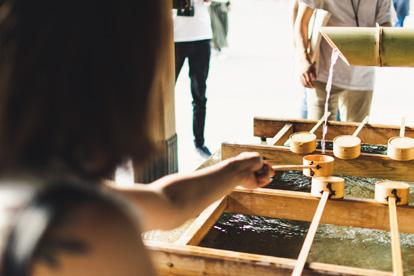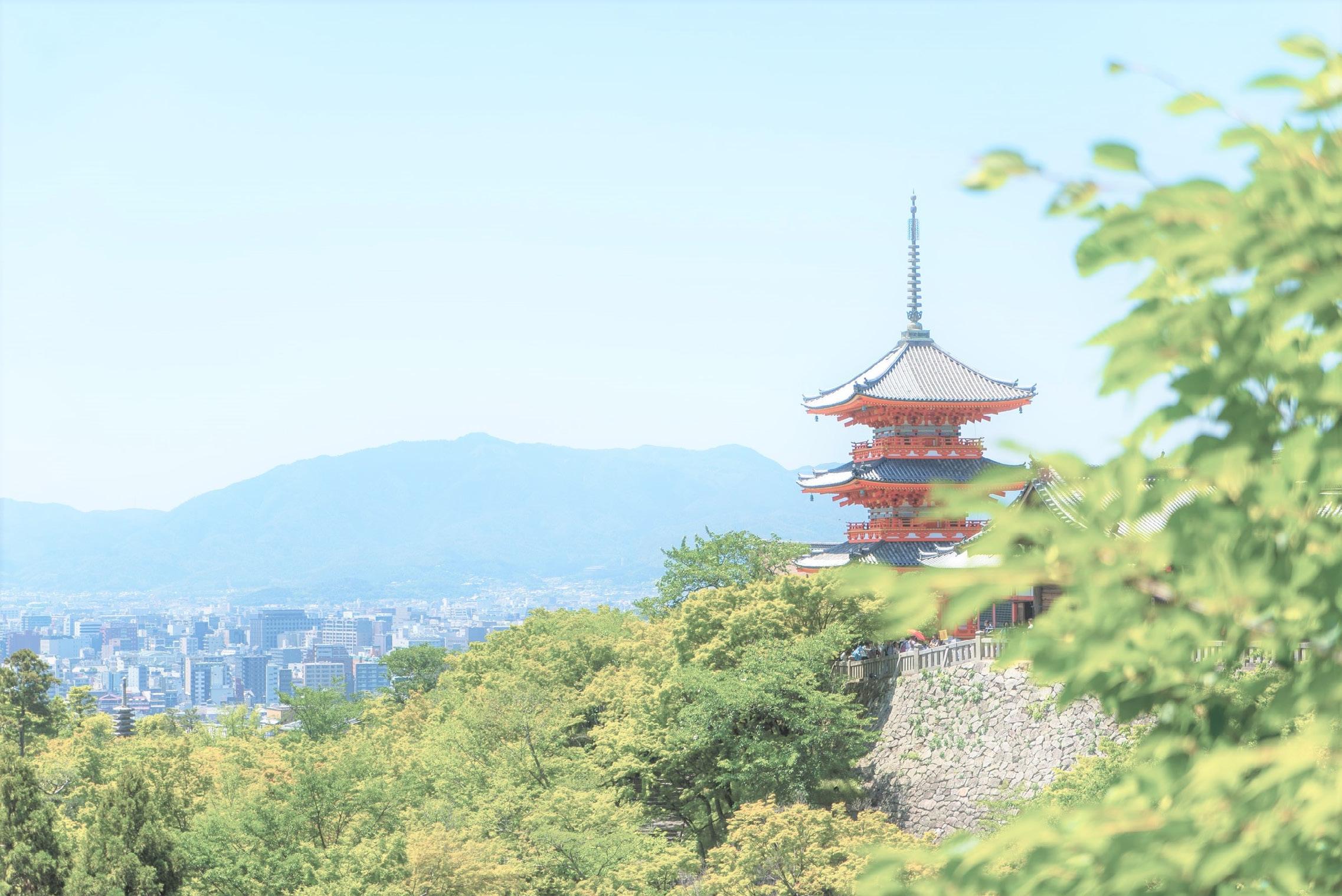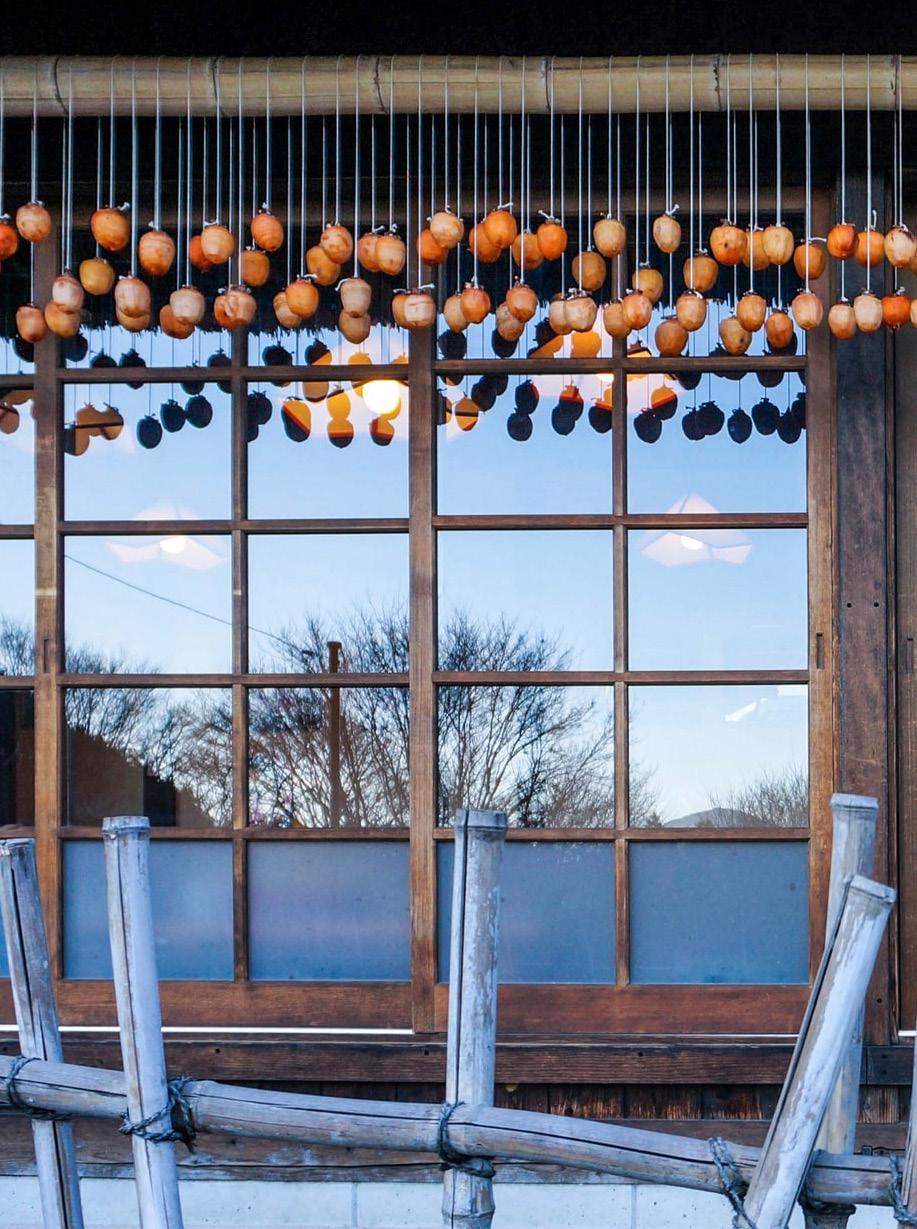
4 minute read
Goshuin Memoirs: A Guide to Shrine & Temple Stamps
MEMOIRS OF A GOSHUIN
A Guide to Shrine & Temple Stamps
Advertisement
By Natasha Taliferro


Are you living or visiting Japan and want a way to memorialize your time minimalistically or without collecting a bunch of trinkets? A great way to participate in Japanese culture and have a great souvenir to take home is to collect goshuin. Collecting goshuin has become a popular hobby among many travelers. You can find a wealth of information on the best pilgrimage routes to take, what kind of goshuin a location has, and even when seasonal or rare goshuin are being used. In today’s goshuin trends, the most intricately designed goshuin attract the most attention.

WHAT IS A GOSHUIN?
A goshuin (御朱印) is a red stamp found at shrines and temples in Japan. They are collected using goshuin-cho ( 御 朱 印 帳 ), a stamp or seal book that can be bought at the shrines and temples, or even at craft stores in Japan. These red stamps serve as proof that one has visited the shrine or temple and worshipped there. Originally, goshuin were obtained during long pilgrimages to shrines, temples and other holy sites; however, goshuin are now collected within the younger Japanese society because of their beautiful designs.


HOW TO GET A GOSHUIN
ONLINE: YAHOO AUCTIONS
If you want to buy a goshuin, you must first have a goshuin-cho (a stampbook). Goshuin should not be used with any other book or piece of paper. If you do not have a goshuin-cho or you forgot yours, you can get the goshuin stamped onto a piece of paper provided at the shrine or temple. It can later be pasted into your goshuin-cho using your standard craft glue (a glue stick is better than liquid glue), or you can frame it!
The price of a goshuin can vary depending on its intricacy and how famous the shrine or temple is, but a typical simple goshuin can cost between 300 yen to 500 yen. The cost of a goshuin-cho can also vary depending on its design, size and where it's bought, but the average cost is about 1,500 yen.
At shrines and temples, the red stamps and the stamp books are sold at the reception area marked with signs such as “御朱印所” (Goshuin-jo), “朱印所” (Shuin-jo) and “ 授 与 所 ” (Juyo-jo). Typically, hours are from 9:00 am to 5:00 pm, but you should check the business hours for each shrine or temple before going.
COLLECTING GOSHUIN IN THE NEW AGE
If you can’t physically go to shrines and temples, another way to participate in collecting goshuin is to buy them from online auctions, or buy them directly from the shrines or temples themselves! While many prefer to get goshuin from places that they’ve actually visited, buying goshuin online is a great way to support both small and large shrines and temples in Japan when you can’t physically be there.
The goshuin offered online are often limited edition or seasonal stamps; however, they often cost more than what they would if bought in person (e.g., 1,000 yen more). Additionally, this option requires some Japanese or the ability to translate the web pages like Google Translate and a Japanese address (e.g., your hotel or AirBnB depending on your length of stay). Once bought through credit card, payment at a convenience store, or through payon-a take rrival (代 between 引き two , “daibik to three i”), da it ys can for the purchase to arrive at the address you provided.

photo credit: dannahbanana _5

Travel tip!
Although it’s okay to use larger bills when paying for your Goshuin at shrines and temples, it is actually respectful and good etiquette to pay with exact change.
WHERE DO I START?
Unsure where to go in Japan for your first goshuin and goshuin-cho? Just stop by the nearest shrine or temple! Most shrines and temples sell goshuin and goshuin-cho, so don’t be afraid to ask. There are also guide books you can buy online or in Japanese bookstores that introduce regional shrines and temples and what goshuin they have.

Although it may seem intimidating at first to walk into a shrine or temple and ask for your first Goshuin, you’ll be collecting stamps in no time!
CULTURE
17 25 27 31










